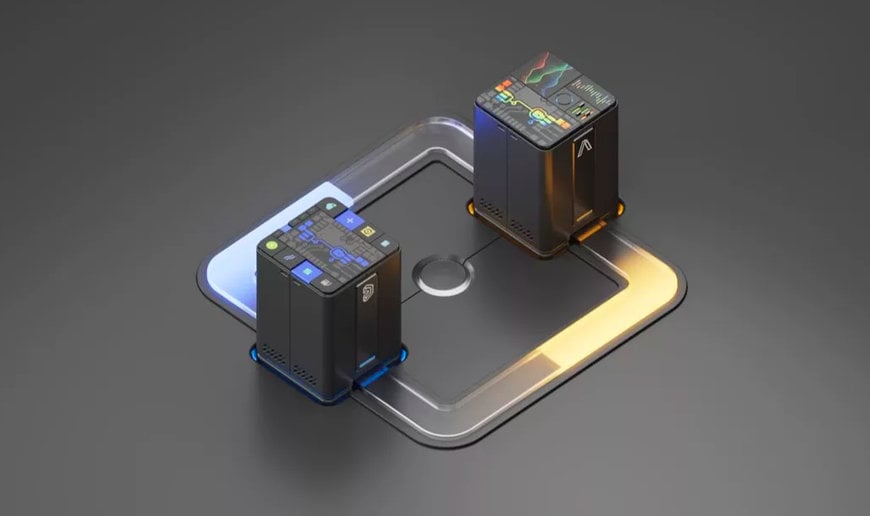electronics-journal.com
18
'23
Written on Modified on
ANSYS AND ALTIUM BOOST ELECTRONICS DESIGN WITH DIGITAL CONTINUITY
Ansys and Altium will further streamline electronics design and development with seamless integration between ECAD and simulation.

A seamless connection between Altium ECAD and Ansys simulation software will transform electronics development
Altium and Ansys are partnering to improve the electronic design and development process by digitally connecting Altium's electronic computer-aided design (ECAD) tools and Ansys Electronics Desktop. This bidirectional integration, set to be available in the second half of 2023, creates a new level of digital continuity while helping to reduce development time and the risk of design errors.
The connection will facilitate seamless collaboration, streamlining the exchange of design data and enabling engineers to work together more effectively within a fully integrated workflow. By eliminating the need for import/export translations and replacing manual, ad-hoc communication methods, the integration supports predictive accuracy, synchronization, and productivity, while reducing the risk of errors. As a result, the digital bridge also minimizes the potential for respins and delays.
“As companies innovate to meet the demand of today’s competitive landscape, they face new product complexities and engineering challenges that require extensive cross-domain collaboration and advanced simulations. And the outdated, manual integration methods being utilized are holding them back,” said Tomek Brzuchacz, head of CAD software at Altium. “This digital connection between ECAD and simulation enables electrical engineers and simulation engineers to work together with ease and accuracy, helping companies to accelerate design time and minimize additional costs.”
Printed circuit boards (PCBs) are an integral part of electronic devices spanning various industries and applications, such as automotive, consumer electronics, Internet of Things (IoT), and more. Further, as connectivity advances from wearable technology to autonomous vehicles, electronics designs increasingly involve fragile components like sensors and integrated circuits (ICs). Consequently, the need for predictively accurate modelling and simulation becomes even more crucial for design success.
Comprehensive electronic design requires an evaluation of signal and power integrity, electromagnetic compatibility, thermal mechanical stresses, and electronics reliability. Ansys offers end-to-end simulation solutions for PCBs, ICs, and IC packages to evaluate an entire system.
“Electronics designers and engineers work tirelessly to produce the countless connected devices and applications demanded by today’s market, and it is critical to equip these innovators with the same level of connectivity during design and development,” said John Lee, vice president of the electronics, semiconductor, at optics business unit at Ansys. “With a bidirectional link between Ansys and Altium solutions, electrical engineers will no longer be slowed down or interrupted by data communication and can focus on design, innovation, and collaboration.”
Altium and Ansys are partnering to improve the electronic design and development process by digitally connecting Altium's electronic computer-aided design (ECAD) tools and Ansys Electronics Desktop. This bidirectional integration, set to be available in the second half of 2023, creates a new level of digital continuity while helping to reduce development time and the risk of design errors.
The connection will facilitate seamless collaboration, streamlining the exchange of design data and enabling engineers to work together more effectively within a fully integrated workflow. By eliminating the need for import/export translations and replacing manual, ad-hoc communication methods, the integration supports predictive accuracy, synchronization, and productivity, while reducing the risk of errors. As a result, the digital bridge also minimizes the potential for respins and delays.
“As companies innovate to meet the demand of today’s competitive landscape, they face new product complexities and engineering challenges that require extensive cross-domain collaboration and advanced simulations. And the outdated, manual integration methods being utilized are holding them back,” said Tomek Brzuchacz, head of CAD software at Altium. “This digital connection between ECAD and simulation enables electrical engineers and simulation engineers to work together with ease and accuracy, helping companies to accelerate design time and minimize additional costs.”
Printed circuit boards (PCBs) are an integral part of electronic devices spanning various industries and applications, such as automotive, consumer electronics, Internet of Things (IoT), and more. Further, as connectivity advances from wearable technology to autonomous vehicles, electronics designs increasingly involve fragile components like sensors and integrated circuits (ICs). Consequently, the need for predictively accurate modelling and simulation becomes even more crucial for design success.
Comprehensive electronic design requires an evaluation of signal and power integrity, electromagnetic compatibility, thermal mechanical stresses, and electronics reliability. Ansys offers end-to-end simulation solutions for PCBs, ICs, and IC packages to evaluate an entire system.
“Electronics designers and engineers work tirelessly to produce the countless connected devices and applications demanded by today’s market, and it is critical to equip these innovators with the same level of connectivity during design and development,” said John Lee, vice president of the electronics, semiconductor, at optics business unit at Ansys. “With a bidirectional link between Ansys and Altium solutions, electrical engineers will no longer be slowed down or interrupted by data communication and can focus on design, innovation, and collaboration.”
www.ansys.com

